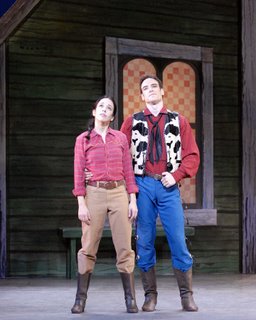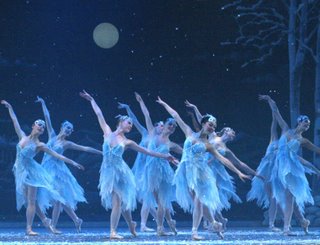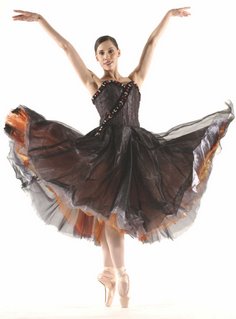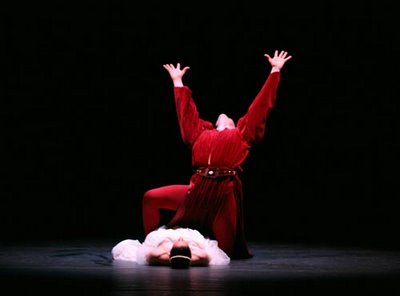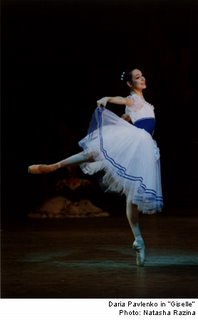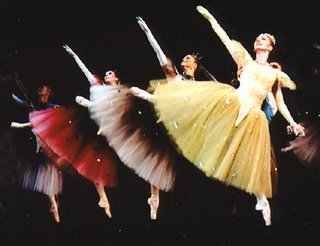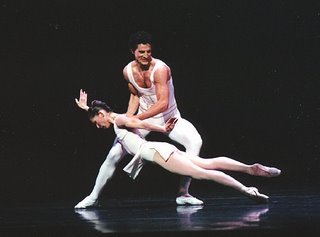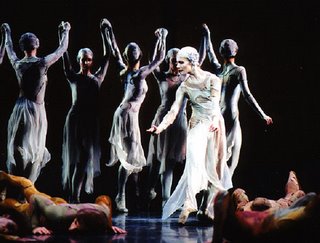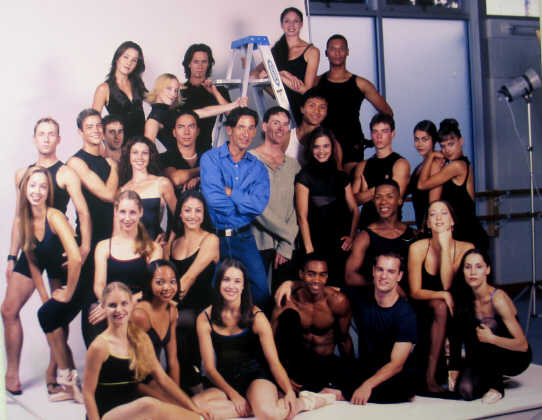
For its final performances of the season this month, the
Washington Ballet opened its company headquarters' doors, located on Wisconsin Avenue. The title of their last program,
7x7: Women, may suggest that it is a square dance performed by the female
corps de ballet. Not exactly. It’s a showcase of seven miniature dances (each lasting approximately seven minutes) created by women choreographers. While women have always dominated ballet as dancers, it has usually been a man’s world when it came to the choreography.
7x7 presents women in dance not only as a performers but also as creators.
As I experienced last Thursday, the atmosphere in the Washington Ballet’s England Studio - transformed into a theater - is very intimate, with just a few feet of space separating dancers and audience. You can hear every breath (and there was a lot of heavy breathing during the evening), see every movement, notice every change in facial expressions on the performers. This is an evening with the Washington Ballet up close and personal.
Don’t expect to see the old stereotypes of ballerinas in white tutus and tiaras dancing on their toes as love-stricken heroines, either. The
7x7 dances are modern and stylish, variously charged with energy, sensuality, and humor. It’s a dynamic variety show with a woman’s touch, offering imaginative, appealing, and entertaining choreography. And because of the short duration of the works it’s all very digestible even to ballet newcomers. The costumes are simple (little shirts, shorts, and plain dresses) and sometimes unusual (white nightgowns), decorations are minimal, and the soundtrack is a definite winner with music by Haydn, Beethoven, Bartók,
Joseph Canteloube, and
Mikis Theodorakis.
Helen Pickett’s
Trio in White opened the program. It is a
pas de trois (more precisely, a
ménage à trois) - a complicated love triangle: two guys and a girl share their passion for each other with the "Moonlight" Sonata’s “Presto Agitato” as accompaniment. Michelle Jimenez was flirtatious, sensual; showing affection for both of her suitors (compellingly danced by Jonathan Jordan and Jared Nelson), who in turn shared a few moments of intimacy with each other. Choreographed by Jessica Lang to a Bartók melody,
Stearc is a stranger piece, featuring a trio of dancers and a trio of chairs. Giselle Alvarez, Corey Landolt, and Jade Payette performed this less immediately appealing work masterfully.
Beautifully choreographed and my favorite,
Uncertain Song (created by Susan Shields) is a romantic dance of two couples: an amalgam of classical ballet and modern dance movements. I couldn’t keep my eyes off Jared Nelson and Morgann Rose whose love duet was breathtaking. They danced with passion and sparkle. Their pairing was impeccable, as if the dancers were singing that
Uncertain Song in perfect unison. An ensemble of nine performed
Shifting to Here(by Tania Isaac), an exhilarating tribal dance with plenty of power and energy - their combined body heat raised the temperature in the studio... given the close quarters probably not just metaphorically.
One could imagine that
Alarm Will Sound, choreographed by Sarah Slipper, was inspired by either
Mission Impossible or
The Thomas Crown Affair. Two dancing couples skillfully navigated through the maze of the “laser beams” as if breaking in or getting out of a secure vault and making sure that alarm will
Not sound.
Minor Loop (a
pas des deux created by Marsha Groethe) looked more like
The Taming of the Shrew, with the company’s principal dancer Jason Hartley as the hero trying to deal with a bad-tempered heroine (Brianne Bland). The program’s closing number was the comic
Pillow Talk (a pajama party of four that ended in a pillow fight), an appealing work and sure audience pleaser.
With such a variety ideas, approaches, and visions to a dance-making, this program will satisfy every taste somewhere while the brevity of the works ensures that the lesser liked pieces go by too fast to displease. And the performance of the Washington Ballet’s young, beautiful, and talented troupe will make you want to come again. For the program schedule, see the Washington Ballet's
Web site.


